In July 2022, Fondazione Pistoletto, through its UNIDEE Residency Programs office, entered into an important collaboration with CISP (the International Committee for the Development of Peoples) somehow already started back in May 2022 with a residency held in Rome where artists from Africa and Europe had worked around the theme of Michelangelo Pistoletto’s Third Paradise. From 7 to 29 September, Cittadellarte will welcome seven artists and creatives from Kenya and Somalia for a special residency. For three weeks, the participants will have the opportunity to discover and study the Venice Biennale, Milan and Turin, a significant process that will give them the opportunity to better understand and relate to the Italian and international artistic and cultural scene. Throughout their stay, the UNIDEE team will arrange weekly mentoring sessions as well as visits and meetings with experts who can contribute to their research in a programme tailor-made to reflect their specific interests. The artists will then have time to focus on their practices by developing new projects or continuing existing ones. The residency programme will end with an informal event, a mix between a studio visit and a party, where the artists will have the opportunity to present their work to a selected audience.
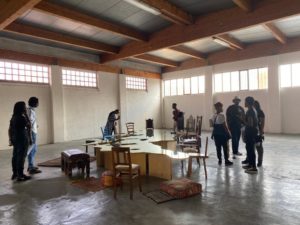
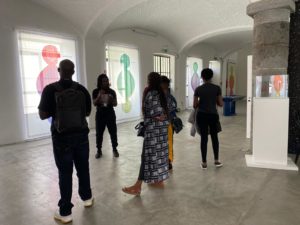
Behind the scenes and objectives
The initiative is the final phase of a long-lasting project that CISP has been conducting for more than a year with a number of local and European partners. The project is called ArtXchange (AXC) – Connecting creative youth in Africa and Europe and is an arts and culture programme co-funded by the European Union within the framework of the AU-EU Youth Cooperation Pole, launched in Addis Ababa during the 2017 AUEU Summit and ratified at this year’s (2022) Summit; it specifically focuses on facilitating the inclusion, empowerment and connection of young people in the creative sector in Africa and Europe by promoting collaboration, skills developing and exchanges in Kenya, Somalia, Italy and Sweden. The project aims at achieving three key goals over its duration: facilitating access to abilities and skills development opportunities for youth and youth-led organisations in the creative sector in East Africa; facilitating access to local and international professional networks/platforms, job and market opportunities in the creative sector for young East African creatives; and promoting cross-cultural dialogue and inclusion through the co-production of innovative and impactful creative events and projects by and for youth in East Africa and Europe.

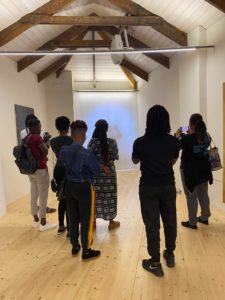
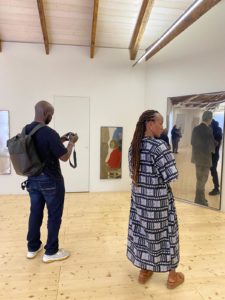
CISP
CISP is an international NGO founded in 1983 in Rome to alleviate poverty and safeguard human rights worldwide. CISP implements humanitarian, rehabilitation and development projects through cooperation with local public and private actors in more than 30 countries in Africa, South America, the Caribbean, Asia, the Middle East and Europe. In Africa, it operates mainly focusing on rural development, food security, economic empowerment, rural and urban health, education and training, natural resource and environmental management, peace building, gender protection and equity, heritage, culture and the arts.
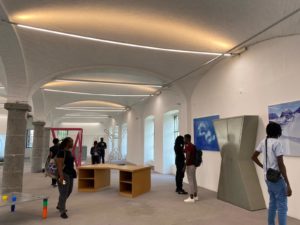
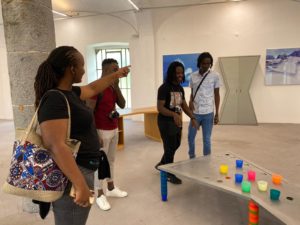

Arts and Culture Sector
CISP aims at empowering arts and culture in order to enhance dialogue, mutual understanding, tolerance and respect between people. Arts and culture can in fact be effective in promoting social inclusion, peace and the protection of vulnerable people, at the same time fostering economic development and the creation of decent employment opportunities. CISP also supports the development of cultural and creative industries to promote sustainable social and economic development, job creation, access to training and skills development opportunities, networking, exchanges and cultural events, particularly for young people. It also supports government authorities in drawing up strategies and policies for the cultural and creative sector, encouraging the meaningful participation of all stakeholders, including artists, young people and the private sector.
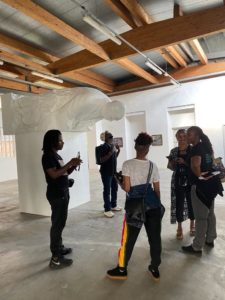

The protagonists of the residency
Who are the artists and creatives in residence? The first is Elijah Bosire, a painter and graffiti/street artist who lives and works in Nairobi, Kenya. He draws inspiration from life in cities and urban areas. He mainly works with acrylics and spray paint, but also likes to experiment with different mediums. He has exhibited his work at numerous art fairs in Africa and won the Sondeka Award in 2019.
The second is Phyllis Ng’etich, PHY, a Kenyan singer-songwriter who started her career as a winner of the talent show Maisha Superstar. Her debut album, “Phylosophy”, was award-nominated and a CNN article called her Africa’s next star. PHY is part of an international collective called NYADO, which produces anthems for change, and uses her creative voice to raise social and environmental issues. She is also the spokesperson in Nairobi for Future Female Africa, a Hamburg-born networking movement that connects African women in the diaspora and on the continent.
The third is Jacqui Ogolla, who has been working as an artist for over three years. During this time, she has participated in several group exhibitions at the National Museum of Kenya and has also exhibited her work at the JAMAFEST festival in Tanzania.
The fourth is Mahad M., an architectural photographer based in Mogadishu, Somalia, who is currently working on an archive project and photo book called “Memories of Destruction”, a photo series exploring the destroyed landmarks of Mogadishu since the beginning of the conflict. Through his work, he creates a visual spatial link between past, present and future, becoming a point in the timeline of a place and a culture.
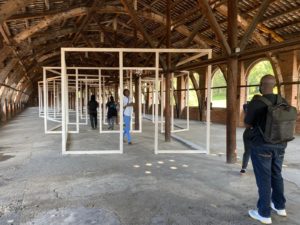
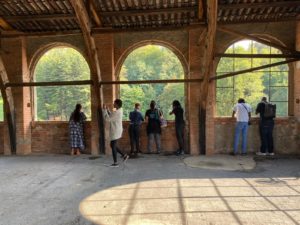
The fifth is Kennedy Wachira Ngatia a contemporary artist/painter born in the Aberdare region of Kenya. His work revolves around nature as a source of inspiration. His passion for drawing and painting led him to graduate in Fine Arts and Design from Kenyatta University. His drawings and paintings often depict concepts of loss and regeneration of life, and use highly saturated tones with thick layers of acrylic colours, which brings out the invisible side of the subject, thus giving nature a voice.
The sixth is Stella Njogo, a multidisciplinary artist who explores the power of voice and sound. She started with producing podcasts and she is now dedicating herself to music with a specific interest in soundscapes and sound design. In 2018 she won an award for her podcast Kalongolongo life. She is currently working on her first LP as a sound artist and music producer, with a preference for electronic and experimental ambient music.
The seventh is Biko Wesa, a Kenyan photographer currently working in Kilifi, Kenya, who tells human interest stories through compelling visual essays and installations that draw the viewer into his world of curiosity and experimentation. Seeking self-discovery through his roots and heritage, his work is primarily based on the themes of culture and identity. He has exhibited his work in Africa, Europe and the United States.

